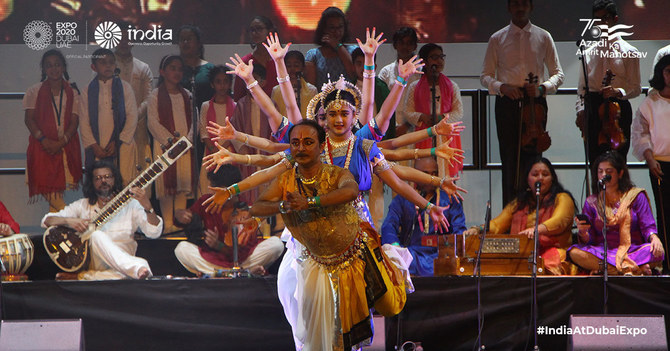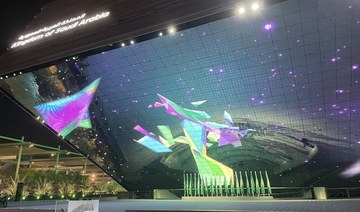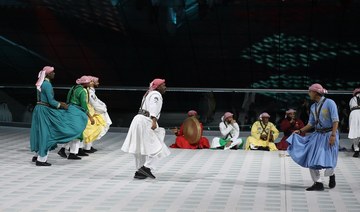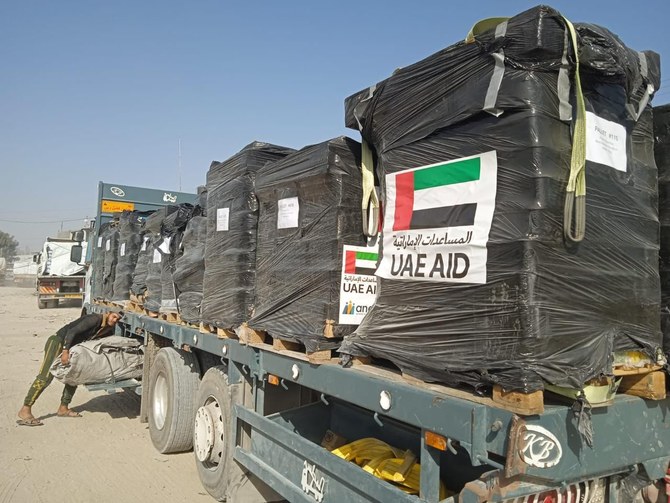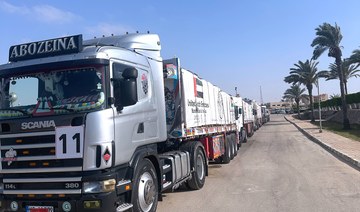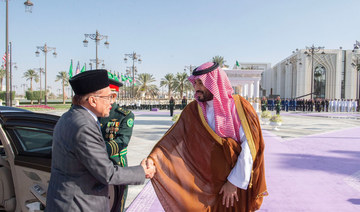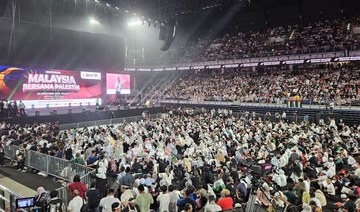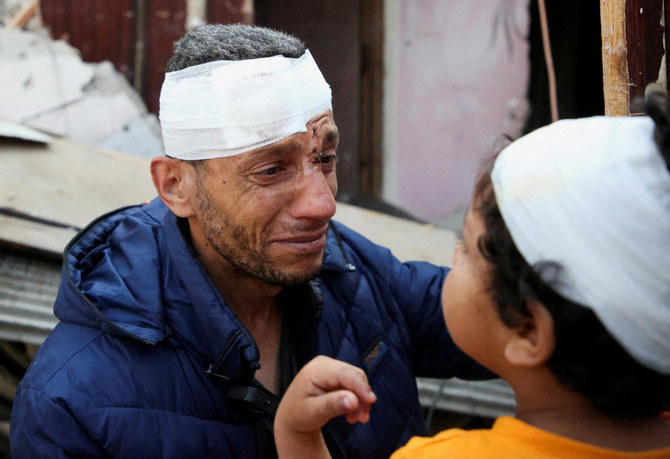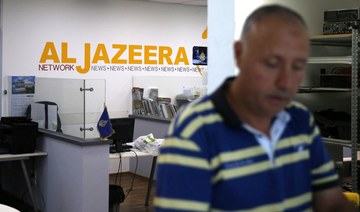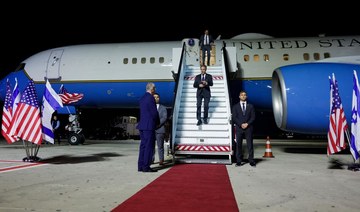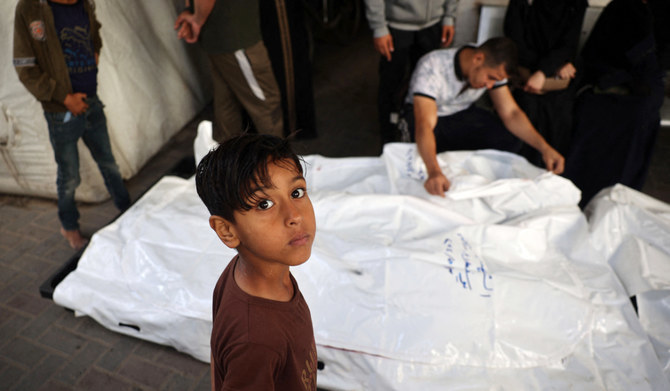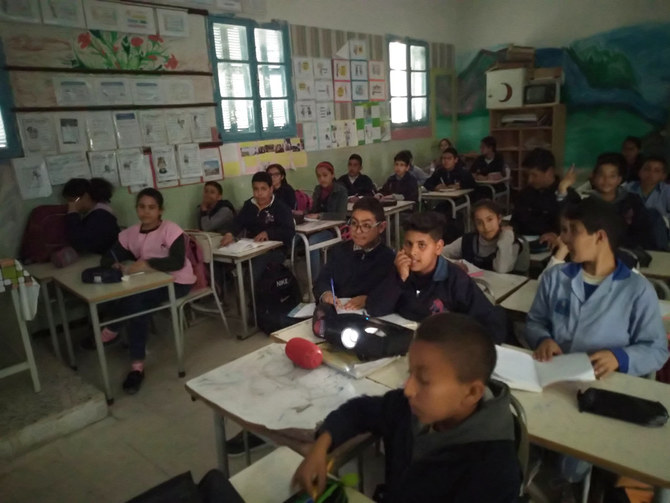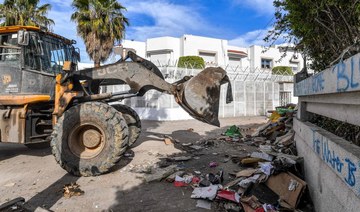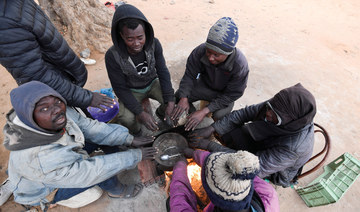DUBAI: Stepping into India’s pavilion at Expo 2020 Dubai is like being instantly transported from the skyscraper-dominated skyline of the Middle East’s commercial capital to the hustle and bustle of South Asia.
The pavilion, located in Al-Forsan Crescent in the expo’s Opportunity District, is one of the largest at the event. Designed by CP Kukreja Architects in Delhi, it features an innovative kinetic facade made up of 600 individual blocks in assorted hues of brown and beige — not entirely unlike the desert landscape outside — arranged in a mosaic of panels, each of which rotates on an axis.
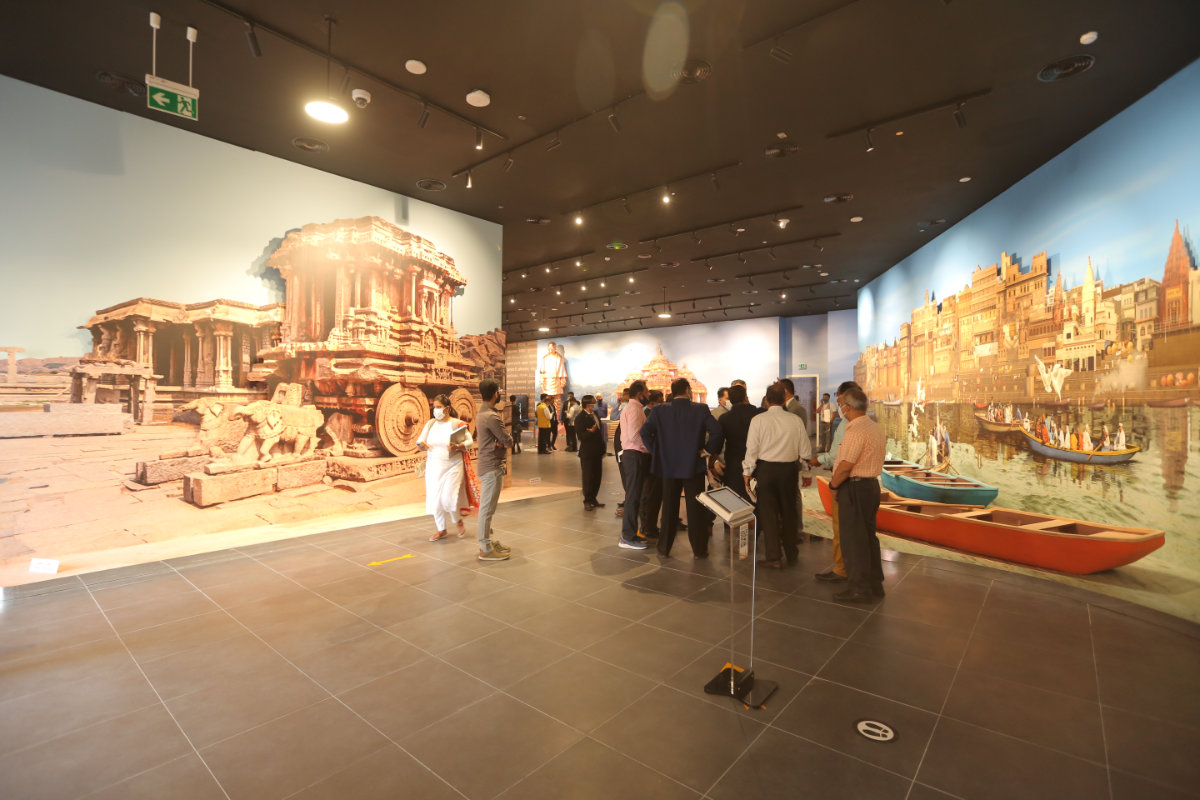
The Indian pavilion’s design represents the country’s dynamism and forward-thinking vision, echoing the theme of an “India on the move.” (Credit: Supplied)
The design is intended to represent India’s dynamism and forward-thinking vision, echoing the theme of an “India on the move;” a country rooted in its rich heritage but also avant-garde and innovative in its approach to technological and economic advances.
The pavilion is also a nod to the nation’s fight against COVID-19 and the various reforms implemented by the government to prepare for what is hoped will be a period of high and accelerated growth as India strives to become a $5 trillion economy.

Combining both its heritage and its ambition, the Indian pavilion features yoga demonstrations alongside displays on its space program. (Credit: Supplied)
“The pavilion takes visitors through the numerous phases of development and the unparalleled growth trajectory that India has experienced in all sectors, ranging from health and wellness, climate change, biodiversity, food agriculture to accomplishments in space,” Aman Puri, the pavilion’s commissioner general and the consul general of India in Dubai, told Arab News.
“We have a wide assortment of festivals and celebrations to offer at the pavilion, which provide our visitors with a once-in-a-lifetime experience to get the … feel of the diverse Indian culture.”
Visitors are greeted warmly as they arrive at the state-of-the-art pavilion, which occupies a 1.2 acre site and showcases the nation’s cultural treasures and technological marvels.
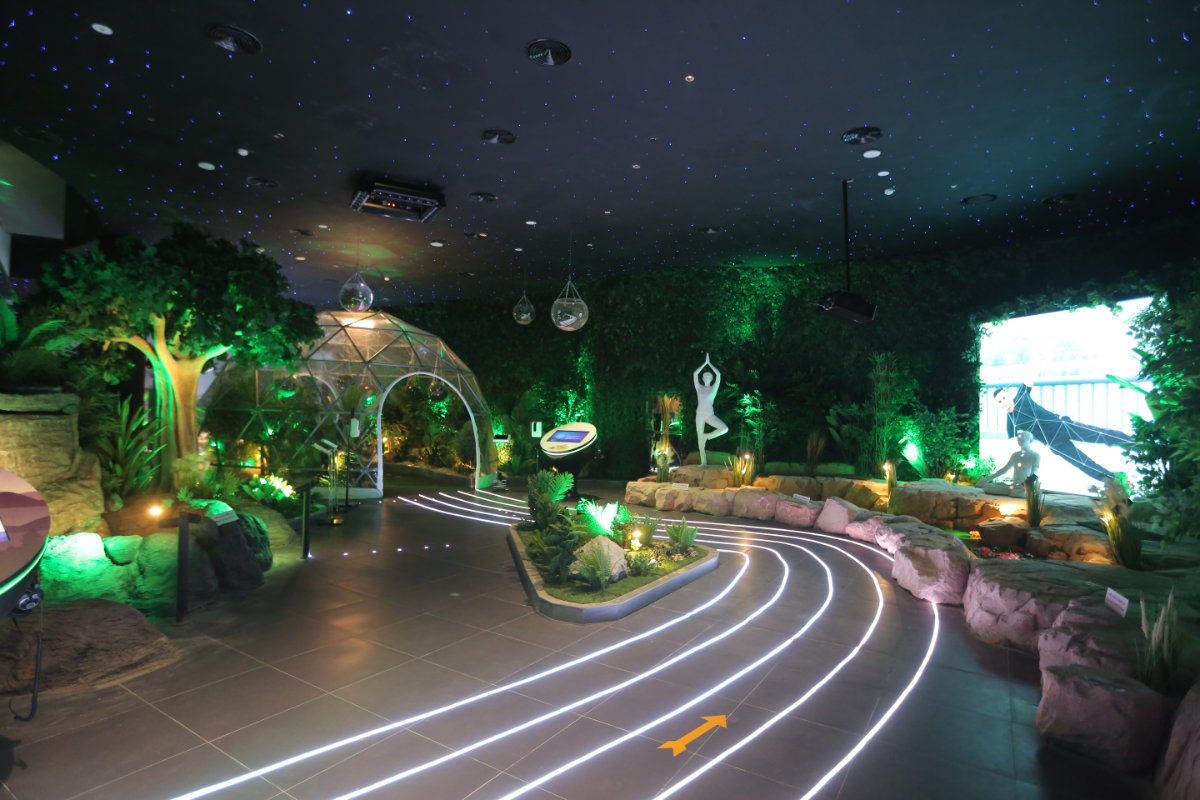
Combining both its heritage and its ambition, the Indian pavilion features yoga demonstrations alongside displays on its space program. (Credit: Supplied)
As they move along a winding pathway they pass by a live yoga display in an area surrounded by greenery, a demonstration of Ayurveda, India’s ancient art of wellness, and a sharply contrasting area dedicated to India’s space program.
Visitors then move up through several levels that offer insights into various aspects of Indian culture, heritage and modern-day achievements. Massive floor-to-ceiling LED screens show images of Indian dancers and traditional ceremonies, and showcase the nation’s successes in the fields of robotics, energy, e-commerce, healthcare, cryptocurrency and blockchain.
A number of conference rooms and meeting spaces will be used to host talks and networking events in the coming months in an attempt to encourage the forging of new international business relationships with India.
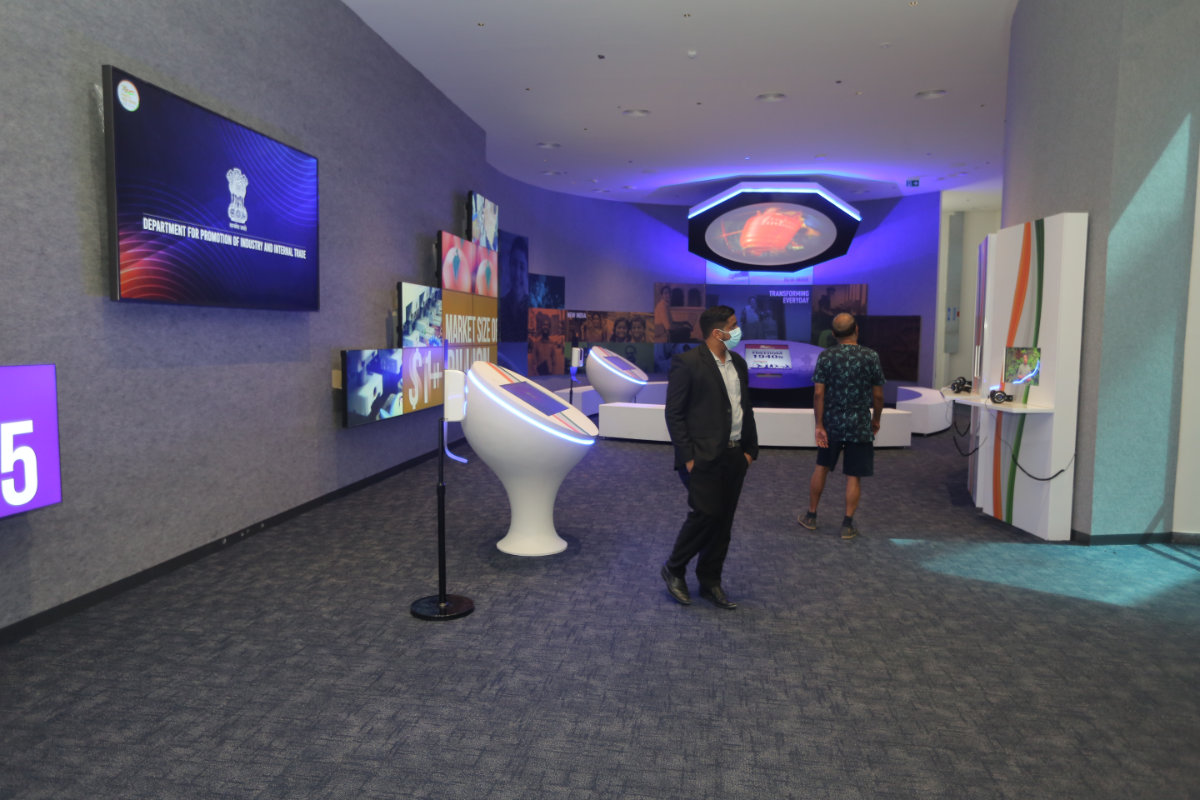
Prior to the pandemic, bilateral trade between India and the UAE was worth $60 billion. As business begins to return to normal, the governments of both countries hope to facilitate investments totaling $75 billion in the coming years.
“The expo is an important occasion to exhibit and invite the world to participate in India’s economic growth by utilizing the existing Indian talent base, creating additional employment opportunities, and empowering the secondary and tertiary sectors,” said Puri.
“The plethora of global discussions, business and investment summits will focus on creating synergies and providing opportunities to explore and accelerate trade partnerships.”
Prior to the pandemic, bilateral trade between India and the UAE was worth $60 billion. As business begins to return to normal, the governments of both countries hope to facilitate investments totaling $75 billion in the coming years.
INNUMBERS
8.5 million - Population of overseas Indians in the Gulf states (2018).
(Source: GoI, Ministry of External Affairs)
Noting that India is “a country of start-up unicorns, and with an ecosystem of more than 50,000 recognized start-ups,” Puri said that “the Innovation Hub at the India pavilion will host several leading startups from India. Expo 2020 Dubai will be an excellent platform for these startups to engage with the global market.”
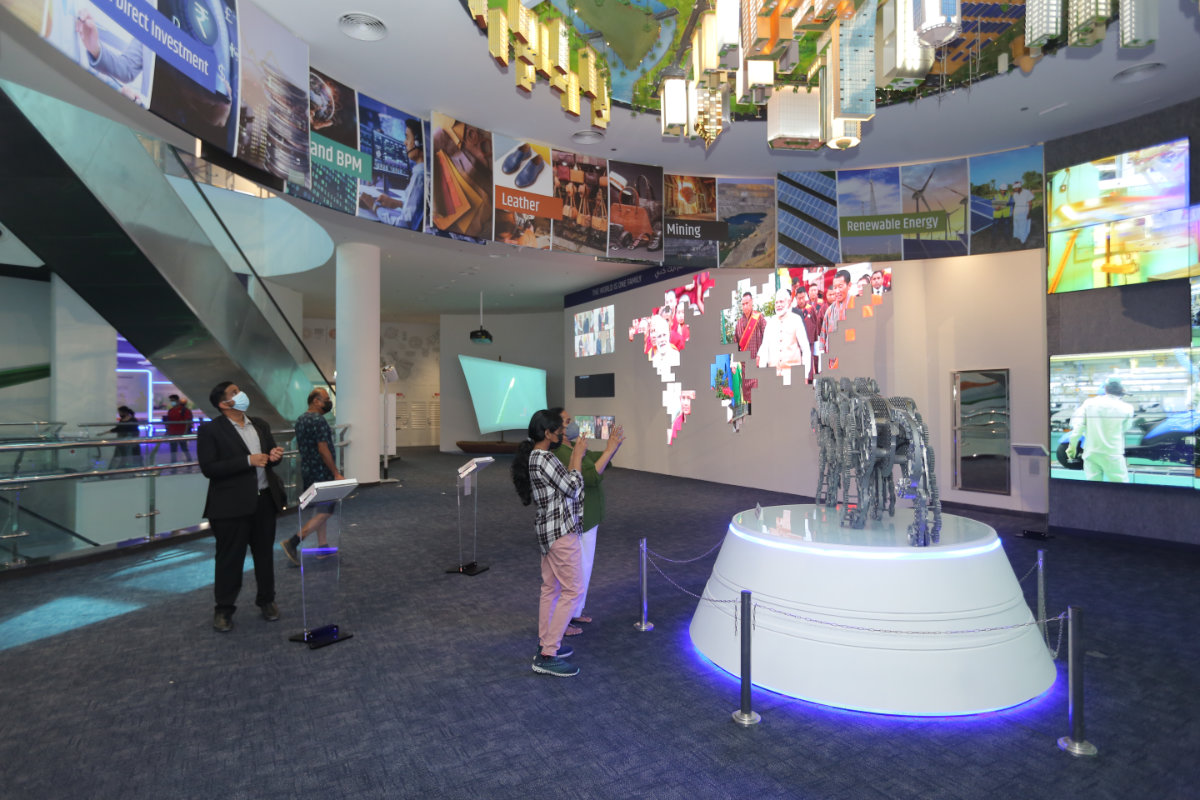
As it emerges from the COVID-19 pandemic, India has set its sights on becoming a high-tech, $5 trillion economy. (Credit: Supplied)
Among the events the pavilion will host is a World Majlis, which includes a program of talks including: Lessons from Space, on Oct. 19; Cities on the Move, on Nov. 2; and Off the Beaten Path, on Jan. 13.
For those interested in sampling some of India’s heritage, arts and crafts, and cultural treasures, the pavilion features a retail area with shops selling gemstones, textiles and pashminas from Jodhpur, Rajasthan and Jaipur.
And of course there is also a food court offering a wide range of Indian delicacies, along with a fine-dining restaurant, managed by Taj Hotels, where visitors can feast on a selection of the country’s rich culinary offerings.
The pavilion will also offer a packed schedule of indoor and outdoor performances of traditional Indian music and dance. In addition, visitors are invited to take part in festivities such as Diwali, the festival of light, and Holi, the festival of color.

India’s state-of-the-art pavilion, which occupies a 1.2 acre site, showcases the nation’s cultural treasures alongside its technological marvels. (Credit: Supplied)
There are plans for the pavilion to remain as a permanent space for cultural and business exchange after the expo concludes, a testament to the long-standing relationship between the UAE and India.
About 2.75 million Indian nationals live in the UAE, representing 27 percent of the Gulf state’s population of about 10 million. The majority work in the service industry, which was badly hit by the precautionary lockdown measures during the pandemic. As a result, many Indian expats were forced to return home.
India’s participation at the expo coincides with the Indian government’s Azadi ka Amrit Mahotsav initiative, also known as India@75, a year-long celebration of the upcoming 75th anniversary of independence from British colonial rule.
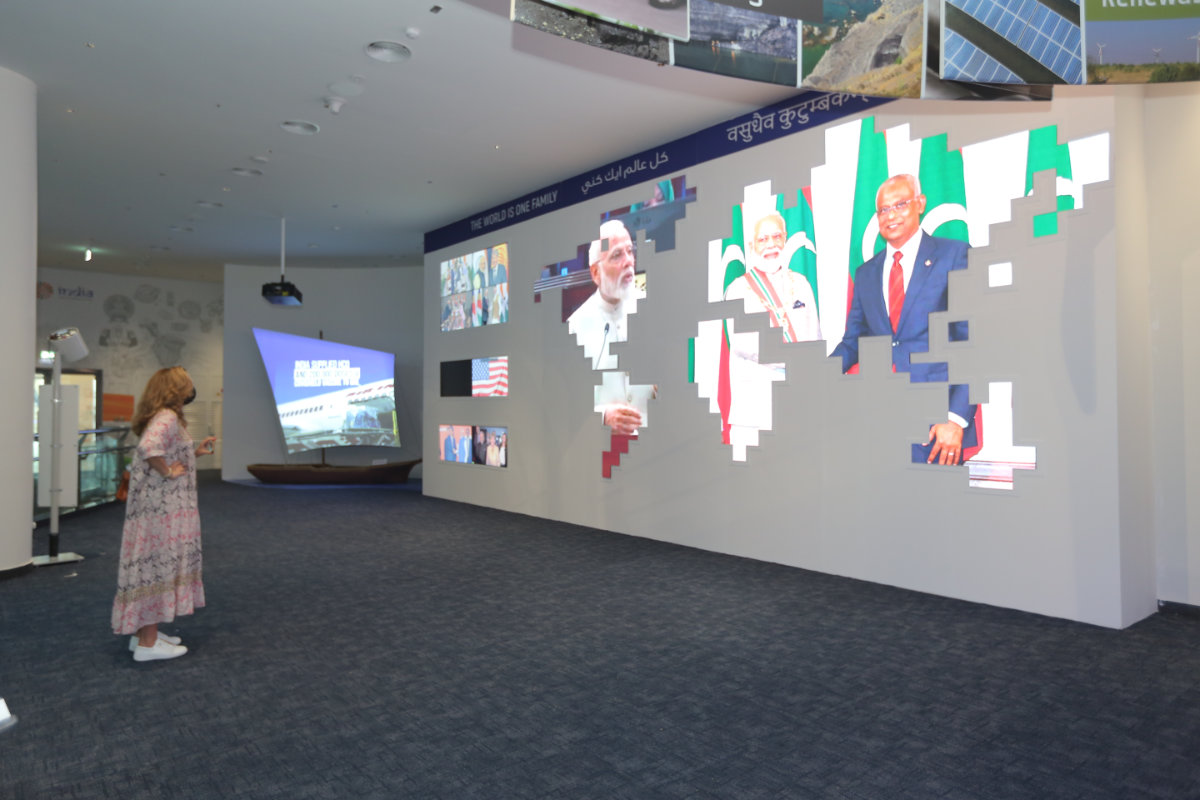
The Indian pavilion’s design represents the country’s dynamism and forward-thinking vision, echoing the theme of an “India on the move.” (Credit: Supplied)
The Indian consulate has launched a number of special events, in addition to those taking place at the expo, to mark the anniversary, including competitions, documentary screenings and art exhibitions. The consulate is also reportedly planning a joint celebration to coincide with the 50th UAE National Day on Dec. 2, in celebration of the bond of friendship between the nations.
Expo 2020 Dubai is the 35th World Expo. The previous one was in Milan in 2015, and the next is scheduled to take place in 2025 in the Japanese city of Osaka, which also hosted the 1970 World Expo.
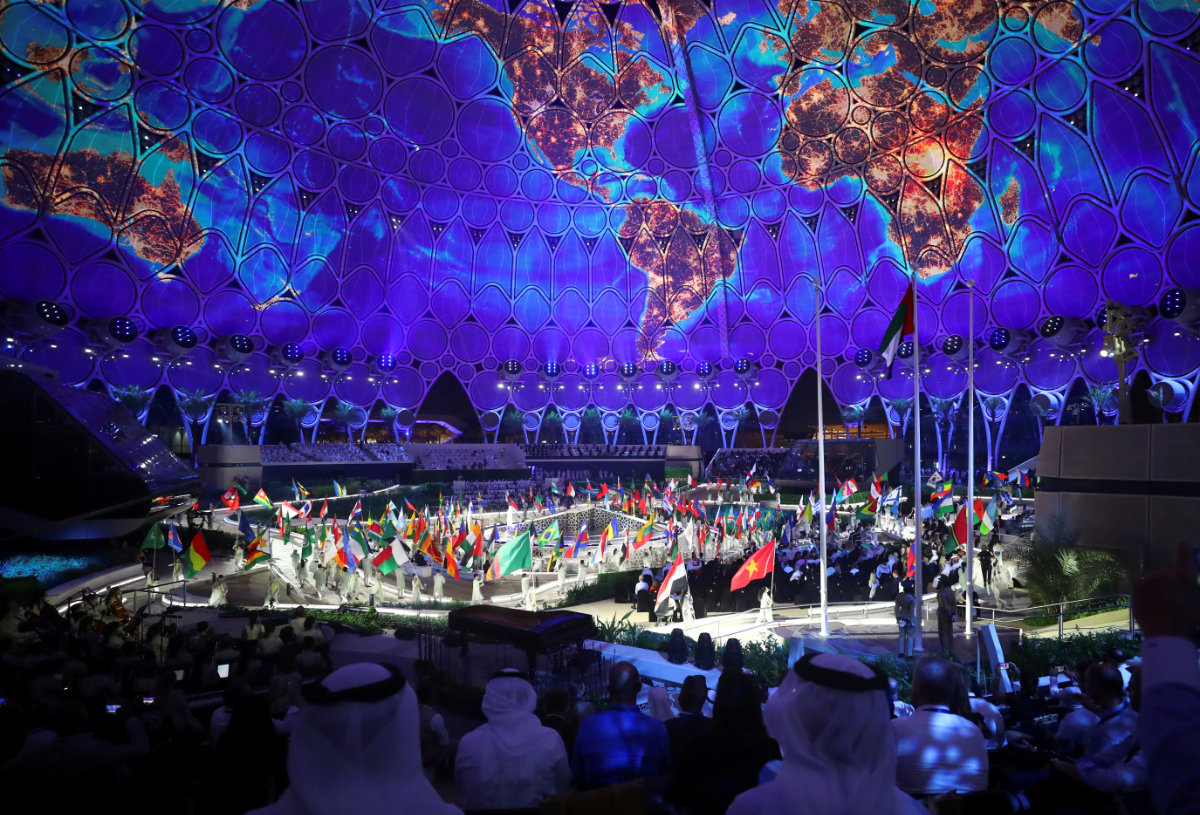
People attend the opening ceremony of the Dubai Expo 2020 in Dubai, United Arab Emirates, on September 30, 2021. (REUTERS/Ahmed Jadallah/File Photo)
The event dates back to 1851 and the Great Exhibition of the Works of Industry of All Nations in London, the first of what came to be called World Expos. In recent years have been staged every five years in a host city for a period ranging from three to six months.
Since 2013, when Dubai impressed a selection panel in Paris with its bid for the 2020 event, the expo has been one the most talked about and eagerly anticipated events in the UAE.
Organizers say the expo, which was delayed by a year because of the pandemic and finally got underway on Oct. 1 this year, provides a showcase for more than 200 participating entities, including 192 countries, and features 60 events. About 25 million visitors are expected before it closes in April.
______________________
• Twitter: @rebeccaaproctor














